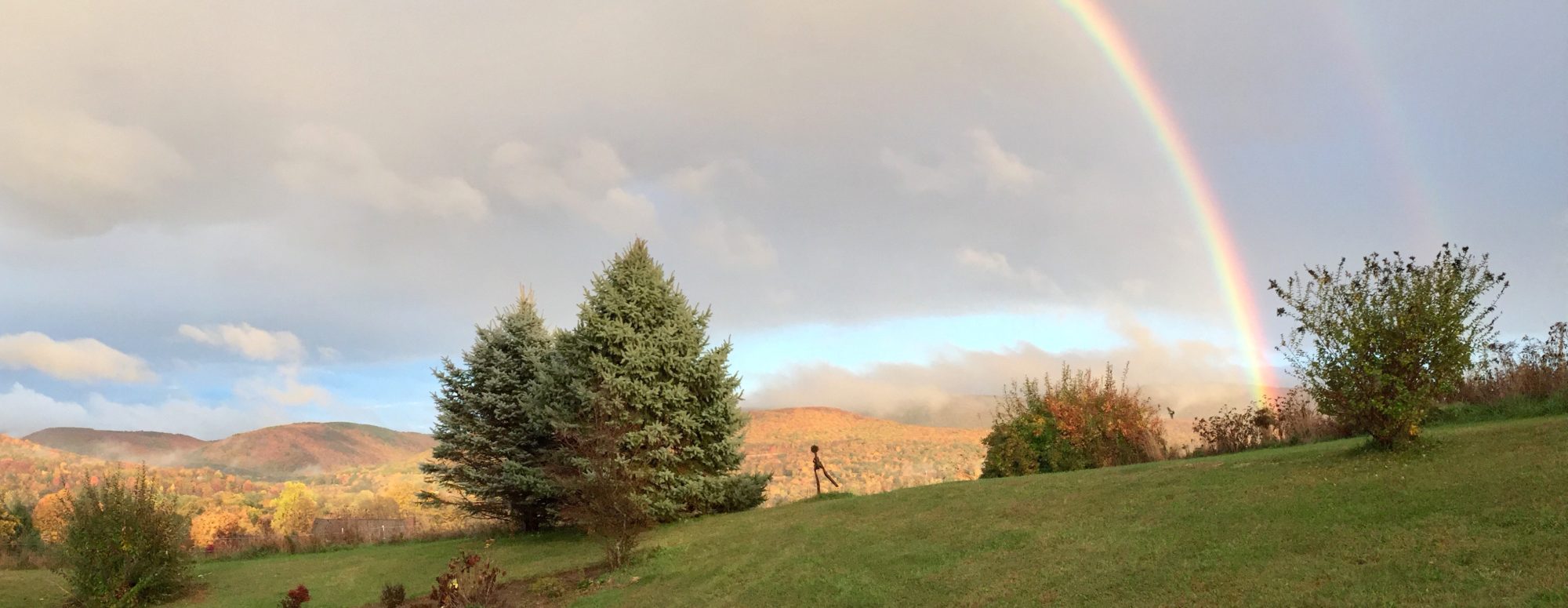The sister science of yoga is Ayurveda. Ayurveda Medicine was developed in India more than 3000 years ago. It is one of the oldest “whole-body healing systems”. It is defined as the science of life. Ayurveda is a system of balancing the energies in the body as well as their connection to nature, including the  seasons. The main energies are known as doshas. The doshas are vata, pitta and kapha. Briefly speaking vata is wind energy, pitta is fire and water, and kapha is water and earth.
seasons. The main energies are known as doshas. The doshas are vata, pitta and kapha. Briefly speaking vata is wind energy, pitta is fire and water, and kapha is water and earth.
We each have a dosha that predominates. Seasons as well are also dominated by a particular dosha. The Vata dosha is prominent in fall. Vata, as mentioned, is composed of the elements of air and space. Some qualities of vata are dryness, roughness and cold. Vata governs movement in the body, activating the nervous system and the process of elimination. An excess of vata energy may make one feel unsettled, overwhelmed, ungrounded and out of balance. Think of the cool and windy days of fall. There is less light. Hurricanes occur in the fall. The trees become dry. Our skin and mucous membranes do as well. We become chilled easily. We cannot change the seasons but we can adjust our life styles to counter the vata energy in Nature. We do this by choosing yoga poses , food and other life style changes that hold the opposite qualifies of the Vata dosha.
We choose yoga poses that focus on grounding our energies to maintain internal balance. We choose practices that calm our system so that we may in turn calm the “winds of vata”. Two organs associated with the Fall season are the lungs and large intestines (Gaiam). Suggested poses on their blog include seated twists and revolved triangle pose, side stretches, back bends such as bow, bridge and camel pose and the warrior poses. Of course sun salutations or variations will warm the body on chilly fall days. “The ultimate symbol of the season is tree pose.” (Chopra Center)
The leaves change color and begin to fall off. Rather than holding on to them, the trees let them go. It is our turn to also let go and to rest and rejuvenate . It may be a time to let go of grudges. Let go of your insecurities and replace them with positive affirmations. Autumn is the best time to rest and restore. Remember the holiday season will soon be upon us. Now is the time to un-schedule. Take vistas of time for yourself. Un-clutter. Take a restorative yoga class.
 Make sure you delight in a long (20 minutes or more) relaxing practice of savasana. This is your own time to release, unwind and refresh. Judith Lasater says that “the resulting harmony is not the point of the practice but the foundation of practice”.
Make sure you delight in a long (20 minutes or more) relaxing practice of savasana. This is your own time to release, unwind and refresh. Judith Lasater says that “the resulting harmony is not the point of the practice but the foundation of practice”.
Besides modifying yoga poses, in ayurvedic medicine, we change with the seasons in many other ways:
- To stay grounded it is best to have a regular daily schedule and eat your meals at the same time.
- Eight hours of sleep would be best.
- This is the time to enjoy warm soups.
- Replace salads and cold dishes with warm, cooked and moist foods.
- Enjoy stews of the
 root vegetables at this harvest time.
root vegetables at this harvest time. - Eat foods that will aid with elimination.
- Drink ginger tea.
- Aid digestion and circulation with spices such as ginger and cardamom.
- Sweet, salty and sour tastes are calming to Vata.
- Balance your resting time with moderate exercise such as long Nature walks on crunching leaves.
- Pick apples.
- Keep your skin moist with lotions or oils.
- Include several breathing practices with each yoga class.
- Last but not least, this may be the best time to begin a meditation practice. The practice will help you stay centered and will ground the active mind of vata.
References-Yoga for all Seasons: Autumn by Nichole Golden-Gaiam.com
Let Your leaves Fall-by Karson McGinley-Chopra Center

